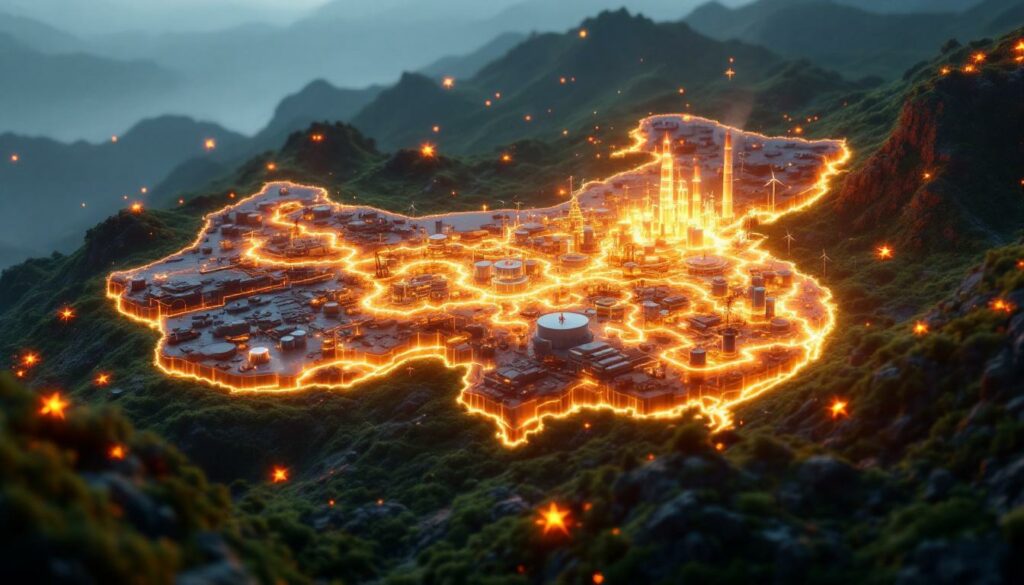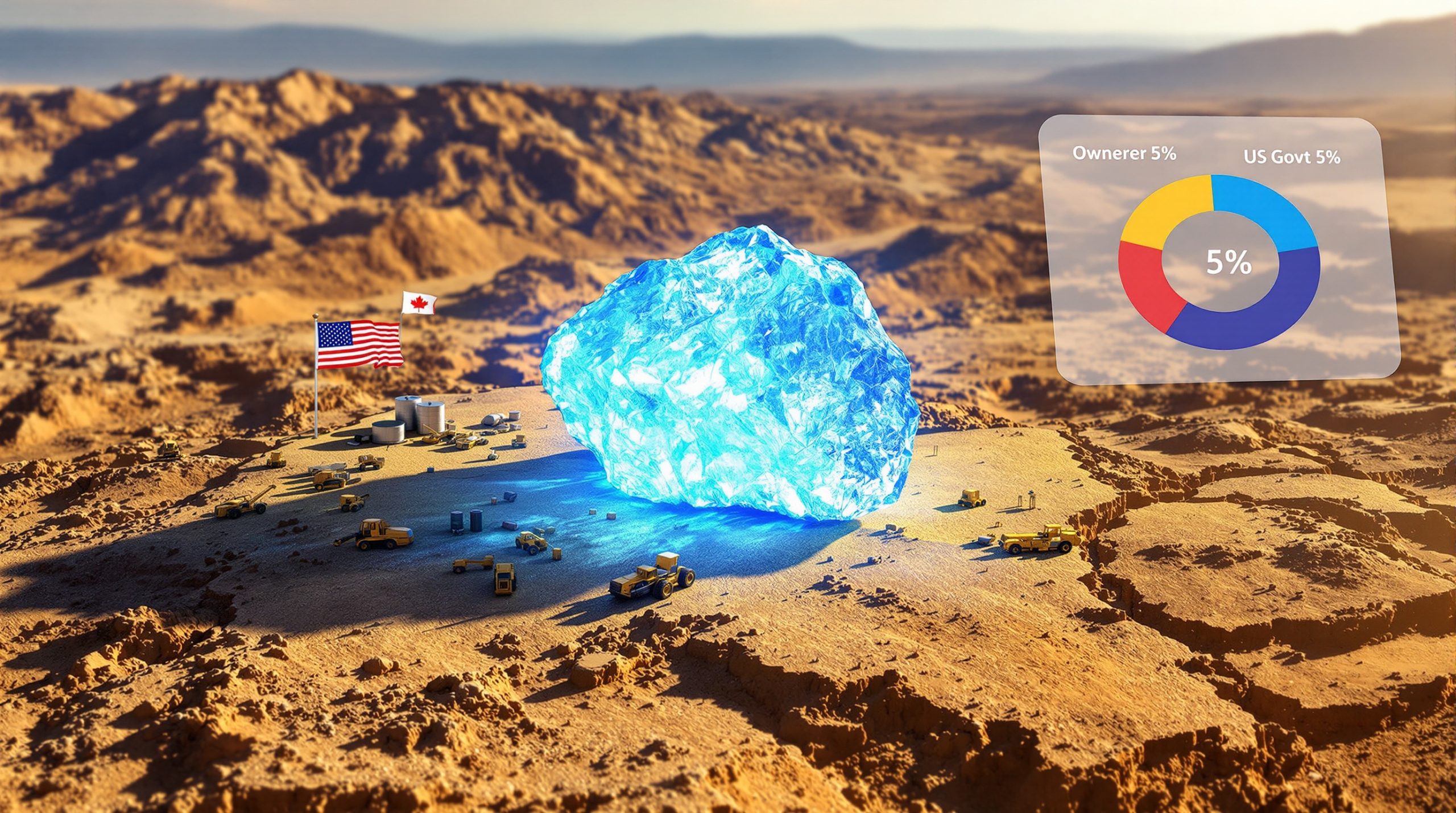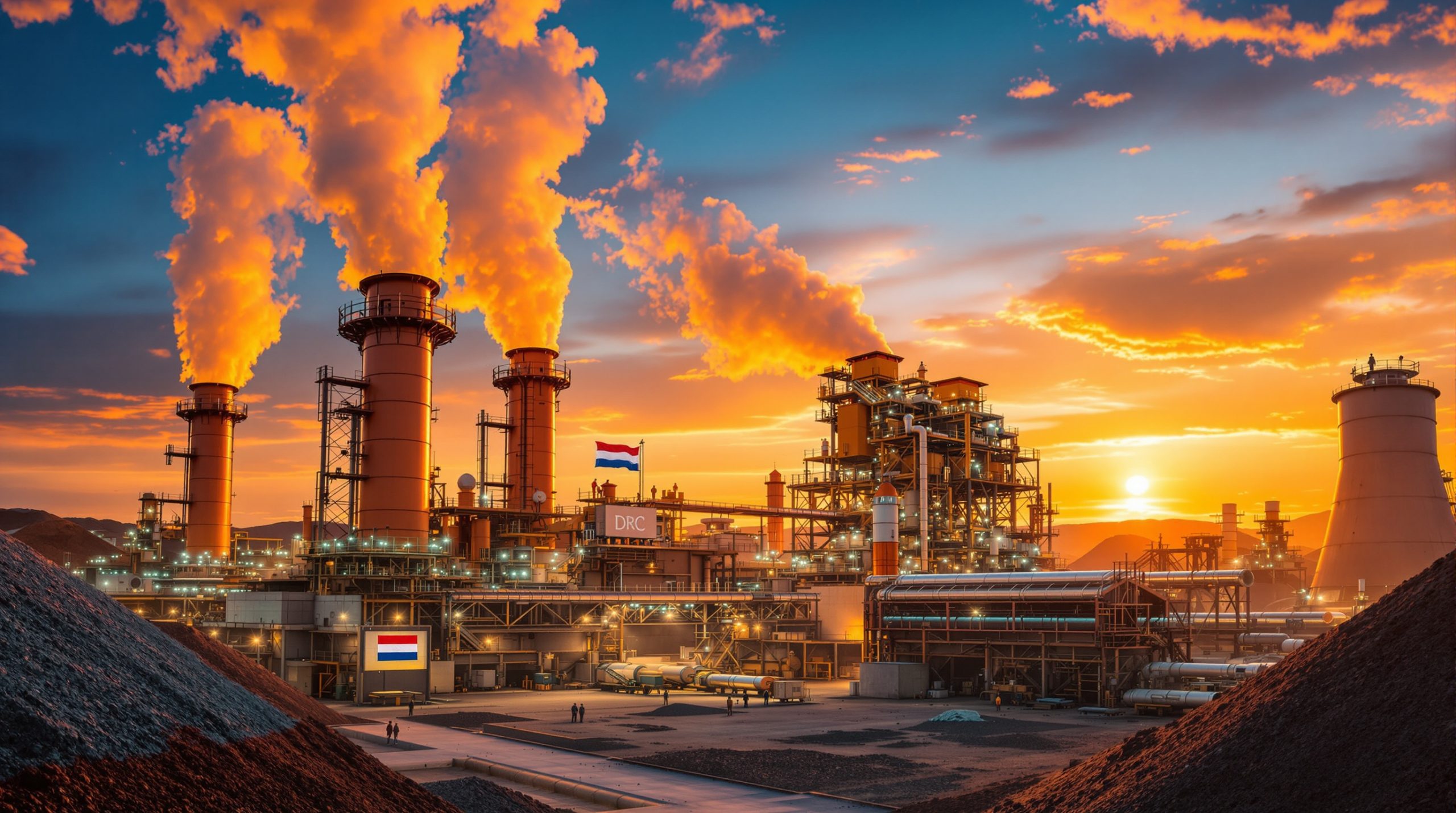Why Is Myanmar Crucial for China's Rare Earth Dominance?
Rare earth elements (REEs) have become the backbone of modern technology, yet few understand the crucial role Myanmar plays in China's dominance of this strategic resource. While China's control of the global rare earth market is well-documented, the importance of Myanmar's contribution remains largely overlooked despite accounting for nearly all of China's heavy rare earth imports. The ongoing mining industry evolution has significantly shifted the landscape of rare earth production and processing.
The Strategic Value of Rare Earth Elements
Rare earth elements comprise 17 metallic elements with unique magnetic, luminescent, and electrochemical properties that make them indispensable in high-technology applications. Despite their name, most rare earths are relatively abundant in the Earth's crust. However, they rarely occur in concentrated, economically viable deposits.
These elements power everything from smartphones and electric vehicles to precision-guided missiles and wind turbines. Neodymium, dysprosium, and terbium are particularly crucial for creating powerful permanent magnets used in electric vehicle motors and wind turbine generators.
According to Grand View Research, the global rare earth market is projected to reach $9.6 billion by 2030, with demand for neodymium alone expected to grow 250% by 2030 as electric vehicle production accelerates, according to the International Energy Agency.
"Rare earths are the vitamins of modern industry" – David S. Abraham, author of The Elements of Power (2015)
The strategic importance of these materials cannot be overstated. The U.S. Department of Defense classifies five rare earth elements as "critical vulnerabilities" in its 2023 Strategic Materials Review, noting that a single F-35 fighter jet requires approximately 427kg of rare earth materials.
China's Commanding Position in the Global Rare Earth Market
China's dominance in the rare earth market is the result of decades of strategic planning. The country controls approximately 60% of global mining output, but more importantly, commands an estimated 85-90% of global processing capacity, according to the U.S. Geological Survey (2024).
This dominance was not accidental but deliberately cultivated through:
- Early strategic investment in mining and processing infrastructure during the 1980s and 1990s
- State-subsidized research into extraction and refining technologies
- Lax environmental regulations that allowed lower-cost production
- Vertical integration with manufacturing
China's willingness to leverage this dominance became evident in 2010 when it restricted rare earth exports to Japan during a diplomatic dispute, causing global prices to spike by over 500%. The implications of such actions have been further complicated by ongoing US–China trade war strategies that continue to shape global markets.
"China's 2010 export embargo demonstrated geo-economic weaponization of rare earth supply chains," noted Professor Eugene Gholz of the University of Notre Dame in a 2023 MIT case study.
In 2024, China further tightened its grip by reducing export quotas by 30% year-over-year, according to the China Ministry of Commerce, signaling its continued willingness to use rare earths as a geopolitical tool.
How Does Myanmar Factor Into China's Rare Earth Supply Chain?
While China possesses significant rare earth deposits, many of its domestic mines are becoming depleted, particularly for heavy rare earth elements (HREEs) like dysprosium and terbium. This is where Myanmar enters the picture as China's critical supply partner.
Myanmar's Abundant Rare Earth Resources
Myanmar has emerged as China's lifeline for heavy rare earths, with Chinese customs data revealing that Myanmar supplied a staggering 98% of China's heavy REE imports in 2023. The mines in Myanmar's northern Kachin State alone yield over 10,000 tons of rare earth concentrates annually, according to the Myanmar Geological Survey.
What makes Myanmar's deposits particularly valuable is their geological composition. The country possesses extensive ion-adsorption clay deposits—a relatively rare formation that contains high concentrations of heavy rare earths.
"Myanmar's clays have 50% higher terbium concentrations than China's Bayan Obo deposits," explains Dr. Julie Klinger, author of Rare Earth Frontiers (2023).
These ion-adsorption clays are ideal for extraction because the rare earth elements are loosely bound to clay particles, making them easier and cheaper to extract compared to hard-rock mining required elsewhere.
The Cross-Border Mineral Flow
The Myanmar-China rare earth supply chain operates through both formal and informal channels. The typical pathway involves:
- Extraction at small-scale mines across northern Myanmar
- Initial processing using basic acid leaching techniques
- Transportation across the border to Yunnan province
- Final refining at specialized Chinese facilities
This cross-border trade is facilitated by geographic proximity—many mining sites are less than 100 kilometers from the Chinese border—and established transportation networks built through China's Belt and Road Initiative investments.
However, the efficiency of this supply chain comes at a cost. The United Nations Environment Programme (UNEP) estimates that informal mining results in approximately 78% material loss during extraction and transportation, representing both economic waste and environmental damage.
What Makes Myanmar's Rare Earths Particularly Valuable?
Myanmar's rare earth deposits aren't just abundant—they possess specific characteristics that make them strategically irreplaceable in the global supply chain.
The Heavy Rare Earth Advantage
Rare earth elements are typically divided into two categories: light rare earths (LREEs) and heavy rare earths (HREEs). While light rare earths like neodymium and praseodymium are more common globally, heavy rare earths such as dysprosium, terbium, and yttrium are scarcer and significantly more valuable.
Myanmar's deposits are exceptionally rich in these heavy rare earths. According to the Journal of Geochemical Exploration (2024), Myanmar's heavy rare earth concentrates contain 8-12% dysprosium, compared to the global average of 6%.
These heavy rare earths are critical for specific high-value applications:
- Dysprosium enables magnets to maintain performance at high temperatures, essential for electric vehicle motors
- Terbium enhances magnet coercivity and is crucial for precision guidance systems
- Yttrium is vital for phosphors in LED displays and laser technologies
"Terbium from Kachin mines enables 20% efficiency gain in direct-drive wind turbines," according to a Siemens Energy whitepaper (2025).
Complementing China's Domestic Resources
Myanmar's rare earth resources strategically complement China's own deposits. While China has abundant light rare earths from mines like Bayan Obo in Inner Mongolia, it faces shortages of heavy rare earths that are essential for advanced technologies.
This complementary relationship explains why China has invested heavily in securing access to Myanmar's resources. The U.S. Geological Survey estimates Myanmar's heavy rare earth reserves at approximately 1.2 million metric tons, compared to China's domestic reserves of 4.4 million metric tons—making Myanmar's contribution essential to China's supply security.
The mining operations in Myanmar also offer significant cost advantages. Labor costs are lower, environmental regulations are minimal, and the ion-adsorption clay deposits allow for simpler extraction methods compared to hard-rock mining.
How Has Political Instability in Myanmar Affected the Rare Earth Trade?
Myanmar's political landscape has been turbulent, particularly since the military coup in February 2021, creating both challenges and opportunities for China's rare earth supply chain.
Impact of Myanmar's 2021 Military Coup
The military takeover in Myanmar disrupted governance structures and heightened conflict in resource-rich regions. Mining licenses have been suspended three times since the coup, according to the Myanmar Ministry of Resources, creating uncertainty for operators.
Production has been particularly affected in conflict zones, with the International Crisis Group documenting a 38% production decline in areas contested by ethnic armed organizations and the military junta in 2024.
Border trade has also experienced periodic disruptions. In April 2024, an offensive by the Ta'ang National Liberation Army (TNLA) halted rare earth shipments for 11 days, causing terbium spot prices to spike 22% on global markets, according to Metal Bulletin reports.
"Junta-allied militias control approximately 80% of mining taxes in rare earth-producing regions," revealed a 2025 UN Panel of Experts report, highlighting how resource extraction finances ongoing conflict.
Despite these challenges, the rare earth trade has shown remarkable resilience, adapting through informal channels and alternative routes when official crossings are compromised.
China's Growing Influence in Myanmar
China has responded to Myanmar's instability by deepening its economic and political influence in the country, particularly in resource-rich border regions. Between 2021-2025, China invested $21 billion in Myanmar through Belt and Road Initiative projects, creating infrastructure that facilitates resource extraction.
China has implemented what analysts call a "Stability Guarantee" approach to secure rare earth supplies, including:
- Dedicated checkpoint lanes for rare earth material convoys
- Infrastructure development in mining regions
- Economic support for local authorities controlling mining areas
- Security cooperation with border forces
These measures have ensured relatively consistent supply despite political turbulence. China has also cultivated relationships with multiple stakeholders in Myanmar's complex political landscape, including both the military government and ethnic armed organizations controlling resource-rich territories.
What Are the Environmental and Social Costs of Rare Earth Extraction?
The environmental and social impacts of rare earth mining in Myanmar represent the hidden costs of the global technology supply chain, with consequences that extend far beyond extraction sites.
Environmental Impacts in Myanmar's Mining Regions
Rare earth mining in Myanmar operates with minimal environmental oversight, resulting in severe ecological damage. The extraction process typically uses ammonium sulfate or acidic solutions to leach rare earths from clay deposits, generating substantial toxic waste.
According to MIT research (2023), producing one ton of rare earth elements generates approximately 2,000 tons of radioactive waste sludge containing thorium and uranium. Without proper containment, these contaminants leach into water systems.
A 2024 Global Witness investigation found tributaries of the Salween River containing uranium concentrations 250 times above World Health Organization safety limits in areas downstream from rare earth mining operations.
The environmental damage extends beyond water pollution:
- Deforestation to clear land for mining operations
- Soil erosion and landslides from unregulated excavation
- Loss of biodiversity in mining areas
- Contamination of agricultural land
The lack of remediation requirements means abandoned mining sites continue leaching contaminants for decades.
Social and Community Effects
The human cost of rare earth extraction in Myanmar is equally concerning. A Johns Hopkins epidemiological survey (2024) documented Kachin villages near mining operations reporting leukemia rates four times the national average, likely linked to radiation exposure and water contamination.
Labor conditions in the mining sector are particularly problematic. The International Labour Organization has documented the use of child labor in acid vat processing of rare earth materials, exposing children as young as 12 to hazardous chemicals without protective equipment.
The economic benefits of mining rarely reach local communities. A pattern of resource extraction without adequate compensation has led to:
- Displacement of communities from traditional lands
- Loss of agricultural livelihoods due to environmental degradation
- Health burdens without corresponding medical support
- Minimal infrastructure development benefiting local populations
This environmental and social damage represents a form of "environmental arbitrage" where China effectively outsources the most harmful aspects of rare earth production to Myanmar while maintaining stricter standards domestically. China's thorium discharge limit for mining operations is 0.1mg/L, while Myanmar has no effectively enforced standards.
How Are Western Nations Responding to China-Myanmar Rare Earth Dominance?
The strategic vulnerability created by China's control of rare earth supply chains has prompted Western nations to pursue various countermeasures, though progress remains slow and challenging.
Diversification Strategies
Western governments and companies are pursuing several approaches to reduce dependence on Chinese rare earth supplies:
-
Developing alternative sources: The U.S. allocated $1.7 billion for rare earth projects under the Defense Production Act in 2024, supporting mines like MP Materials' Mountain Pass operation in California.
-
Investing in processing capacity: Australia's Lynas Corporation has established processing facilities in Malaysia that achieve 95% purity levels, exceeding Chinese standards for some elements.
-
Accelerating recycling initiatives: The European Union's Critical Raw Materials Act mandates 25% of rare earths be sourced from recycled materials by 2030, though technical challenges remain significant.
-
Researching substitutes: Research into alternative materials that can replace rare earths in certain applications has intensified, particularly for permanent magnets.
"We're 15 years behind China's processing expertise," acknowledged MP Materials CEO James Litinsky during a quarterly earnings call, highlighting the challenge of catching up to China's established capabilities.
The technical reality remains sobering. According to the Fraunhofer Institute (2025), current recycling technologies recover less than 1% of heavy rare earths due to the challenge of separating these elements from complex end-products.
Policy Responses and Security Initiatives
Western governments have implemented various policy measures to address rare earth supply vulnerabilities:
-
Critical minerals legislation: The U.S., EU, Australia, and Japan have all passed laws designating rare earths as strategic materials and providing incentives for domestic production.
-
Strategic stockpiling: Several countries have established rare earth reserves for national security purposes, though the volumes remain relatively small compared to industrial needs.
-
International partnerships: The U.S.-led Minerals Security Partnership brings together 13 countries to coordinate investment in critical mineral supply chains.
-
Trade measures: Various tariff and non-tariff barriers have been implemented to protect nascent domestic rare earth industries from Chinese competition.
Despite these efforts, establishing a complete rare earth supply chain outside China's influence remains a long-term project measured in decades rather than years. Furthermore, addressing critical minerals energy security concerns requires comprehensive strategies beyond simply diversifying supply chains.
What Does the Future Hold for the Myanmar-China Rare Earth Relationship?
The Myanmar-China rare earth relationship faces evolving challenges and opportunities that will shape global supply chains in the coming years.
Evolving Geopolitical Dynamics
Myanmar's increasing economic dependence on China creates both stability and vulnerability in the rare earth relationship. Belt and Road Initiative investments totaling $21 billion between 2021-2025 have strengthened China's position, but several countervailing forces are emerging:
-
Resource nationalism: Draft revisions to Myanmar's mining law propose 30% state equity requirements for new projects, potentially complicating China's access to resources.
-
Regional competition: India and Japan have increased economic engagement with Myanmar, offering alternative partnerships that could diversify the country's options.
-
Ethnic conflicts: Armed groups controlling resource-rich territories are asserting greater autonomy, with the United Wa State Army using mining taxes to fund approximately 40% of its military budget, according to the International Crisis Group (2024).
-
Western sanctions: Targeted sanctions against military-linked mining enterprises create legal complications for international trade in Myanmar's resources.
The Rare Earth Observer newsletter noted in July 2025 that "Myanmar's instability has prompted China to explore alternatives in Mozambique and Tanzania," suggesting contingency planning for supply disruptions.
Market and Technology Trends
Several market and technology trends will influence the future of rare earth supply chains:
-
Growing demand from energy transition: Wind turbines and electric vehicles will drive a projected 300-500% increase in demand for certain rare earths by 2035.
-
Substitution research: Chinese researchers filed patents for dysprosium-free magnets in 2024, potentially reducing dependence on specific heavy rare earths.
-
Processing innovations: New separation technologies using ionic liquids could reduce the environmental impact of rare earth processing.
-
Price volatility: Restricted supply and growing demand suggest continued price volatility, incentivizing investment in alternative sources.
-
Recycling technology: Advances in hydrometallurgical recycling techniques could increase recovery rates from end-of-life products.
For the foreseeable future, Myanmar will remain critical to China's rare earth dominance, but the relationship is likely to face increasing pressures from environmental concerns, political instability, and international competition. The push for mining sustainability transformation will also play a significant role in reshaping this relationship, particularly as environmental and social governance standards gain importance globally.
FAQ: Understanding the Myanmar-China Rare Earth Connection
Why can't other countries replicate the Myanmar-China rare earth relationship?
Several factors make the Myanmar-China rare earth relationship difficult to replicate:
-
Geological uniqueness: Myanmar's ion-adsorption clay deposits containing high concentrations of heavy rare earths are relatively rare globally.
-
Geographic proximity: The close border relationship enables efficient transportation and integration with Chinese processing facilities.
-
Infrastructure development: China's decades of investment in specialized processing facilities represent billions in sunk costs that are difficult to replicate quickly.
-
Technical expertise: China has developed proprietary technologies and a skilled workforce specialized in rare earth processing that took decades to establish.
-
Environmental regulatory differences: The environmental impact of rare earth processing would face stricter regulation in many countries, significantly increasing costs.
How does the Myanmar-China rare earth axis affect global technology prices
Are You Investing in ASX Mining Stocks?
Gain the market edge on significant ASX mineral discoveries with Discovery Alert's proprietary Discovery IQ model, providing real-time notifications on high-potential opportunities before they hit the mainstream. Visit the discoveries page to see how major mineral discoveries have historically delivered exceptional returns for early investors.




